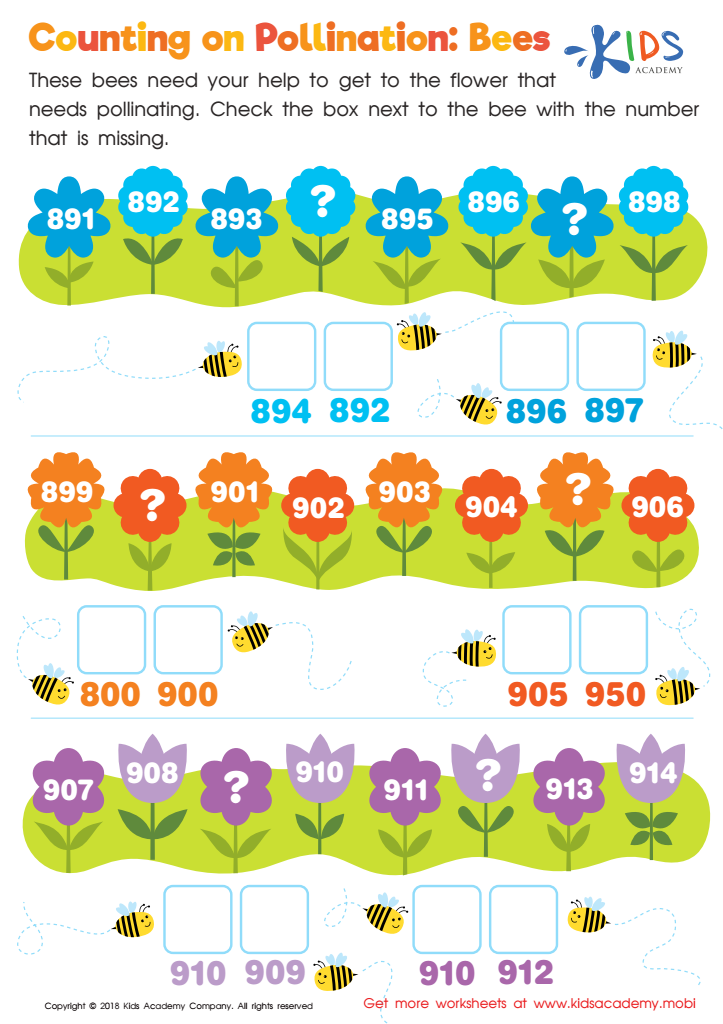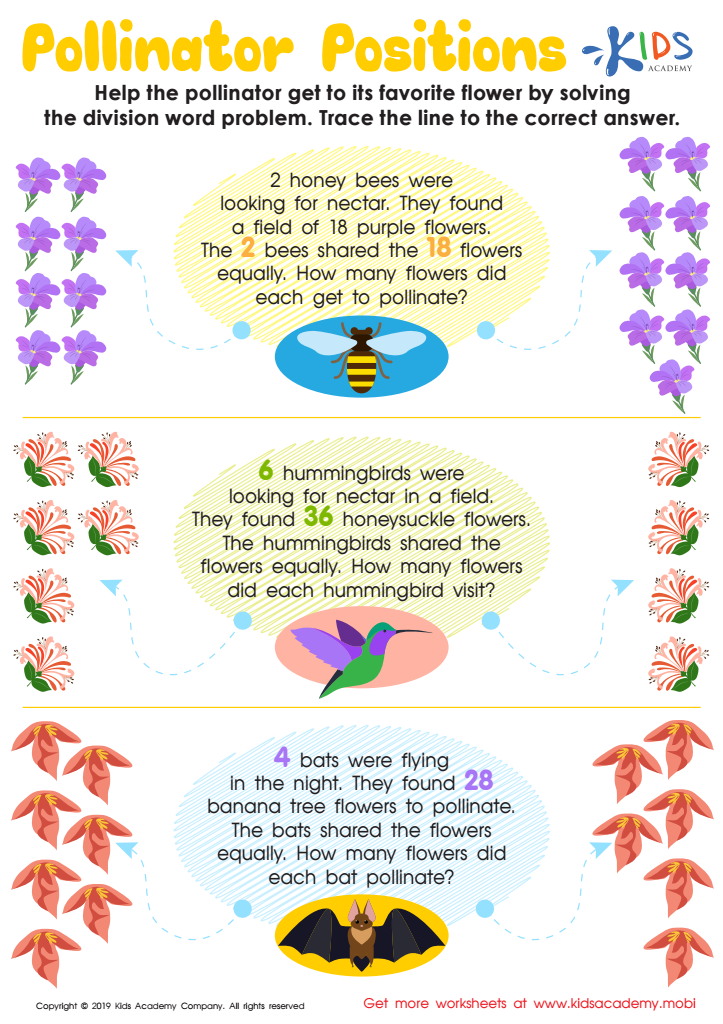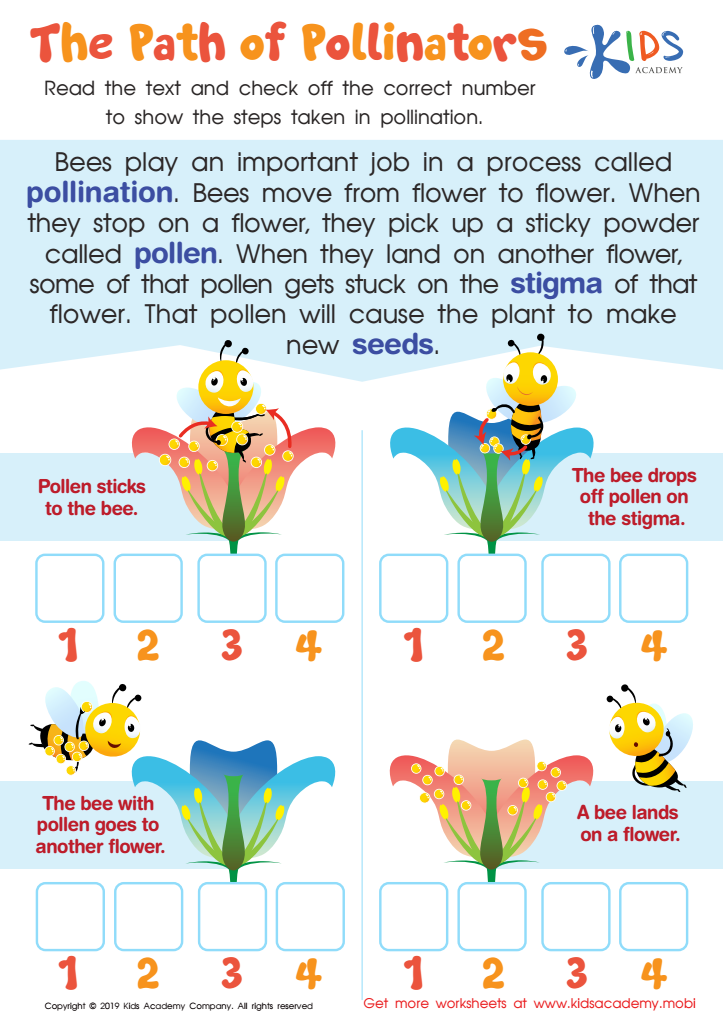Understanding pollination Plants and Animals Worksheets for Ages 4-8
3 filtered results
-
From - To
Explore the fascinating world of pollination with our engaging worksheets designed for children ages 4-8. "Understanding Pollination: Plants and Animals Worksheets" offers interactive activities that help young learners grasp the essential role of pollinators in our ecosystem. Through colorful illustrations and age-appropriate exercises, kids will discover how plants reproduce and the vital contributions of bees, butterflies, and other animals. These worksheets offer a fun way to enhance observation skills, foster environmental awareness, and spark curiosity about nature. Perfect for classroom use or at-home learning, inspire a love for science with our delightful and educational resources!


Counting on Pollination: Bees Worksheet


Pollinator Positions Worksheet


The Path of Pollinators Worksheet
Understanding pollination is crucial for young children, as it lays the foundation for their knowledge of ecosystems and the vital roles plants and animals play in nature. For parents and teachers of ages 4-8, engaging children in the concept of pollination can spark curiosity about the environment and promote a sense of responsibility toward conserving it.
Pollination is a fascinating process featuring interactions between plants and animals, primarily insects like bees, butterflies, and even some birds. Teaching children about this essential relationship helps them appreciate biodiversity and the interdependence of life forms. When children learn about how plants reproduce and how pollinators are key to food production, they begin to understand where their food comes from, fostering healthier eating habits and an interest in gardening or nature.
Educational activities, such as observing these interactions in the backyard or community gardens, encourage hands-on learning, critical thinking, and creativity. As children develop a love for nature, they become advocates for protecting their environment. Ultimately, fostering an early appreciation for pollination not only enhances their understanding of science but also nurtures a lifelong commitment to ecological stewardship.

 Assign to My Students
Assign to My Students
















